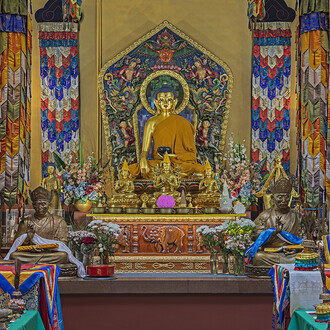The Moscow Museum of Modern Art together with Tabakman Collection presents «JUMBO LOVE©Henry Khudyakov» — the first solo exhibition of Henry Khudyakov to be held in Russia. The retrospective includes Khudyakov’s artworks and memorabilia from his career such as artist’s books, documentation of performances, video interviews, archive materials and photographs. The show can be regarded as a journey interspersed with the artistic events and artworks that played a crucial role in Khudyakov’s life.
Henry Khudyakov embarked on his career as an artist in 1969 when as a final year student at the Department of Philology of the Leningrad University he worked on developing a theoretical grounding for his visual search as part of his poetic experimentation. Cut off from official publication channels, Henry Khudyakov’s handwritten and typewritten books existed as part of the self-publishing movement, samizdat, outside the Soviet printed media, thus using a social ban as an opportunity for a creative action.
In 1974, the artist emigrated to the United States where he continued to work in the fields of visual art and experimental poetry, combining various art forms. The atmosphere of the New York art scene of the 1970s, which was dominated by the East Village movements, naturally provided a basis for Khudyakov’s further evolution as an artist. The East Village art scene, which brought together beatniks, performance artists, rockers, members of the Fluxus community, as well as gave birth to such celebrities as Jeff Koons, Keith Haring and Michel Basquiat, in many ways resonated with Henry Khudyakov. During this period, the artist’s tools were enriched by «found objects» from the streets of New York. He used them to produce his neckties, shoes, jackets, and shirts which acted as manifestos of his «ideal» world. Acquiring a new skin, made of badges, bottle caps, foil, adhesive tape, stickers, rhinestones, straws, sponges and toys, these mundane objects turned into precious artefacts of our time, offering new authenticity and new vision.
The exhibition traces Khudyakov’s career both as a poet and an artist, blurring the distinction between such phenomena as performance and visual-poetic language, experimentation and tradition, a work of pop art and an expressive abstract painting. A special place in the exhibition is occupied by recorded interviews with the artist and his poetry readings, which represent a new art form — acoustic performance. Henry’s paradoxical reciting style echoed Bob Dylan’s gruff voice and the manifestos of Allen Ginsberg who called on to read Shelley and Emily Dickinson.
For Henry Khudyakov, the freedom of formal expression meant first of all spiritual freedom, conveyed through plastic formulas of his own creation. These formulas, close to a pictographic language and incorporated in visual text, are no longer images of an object — they become subjects containing their own energy and their own creative will. Today, Henry Khudyakov’s poetic world can be viewed as a manifesto, a drama, and the output of his paradoxical life. A catalogue under the same title in both Russian and English languages has been published to coincide with the exhibition.












